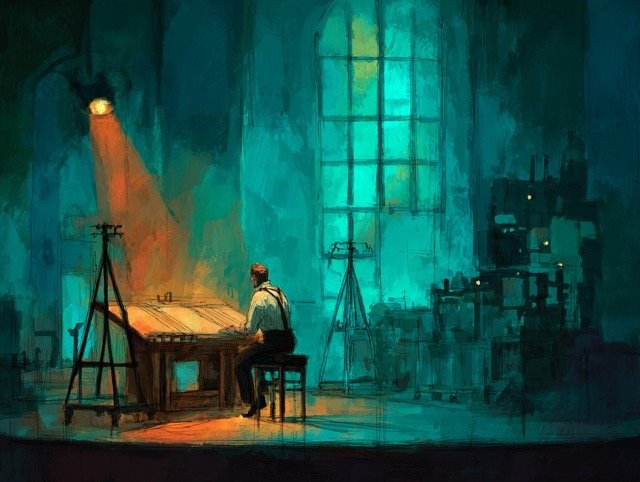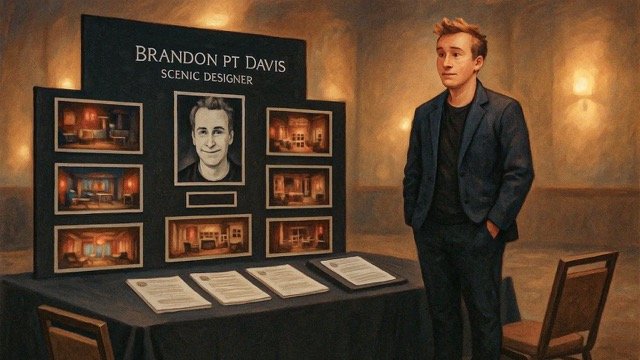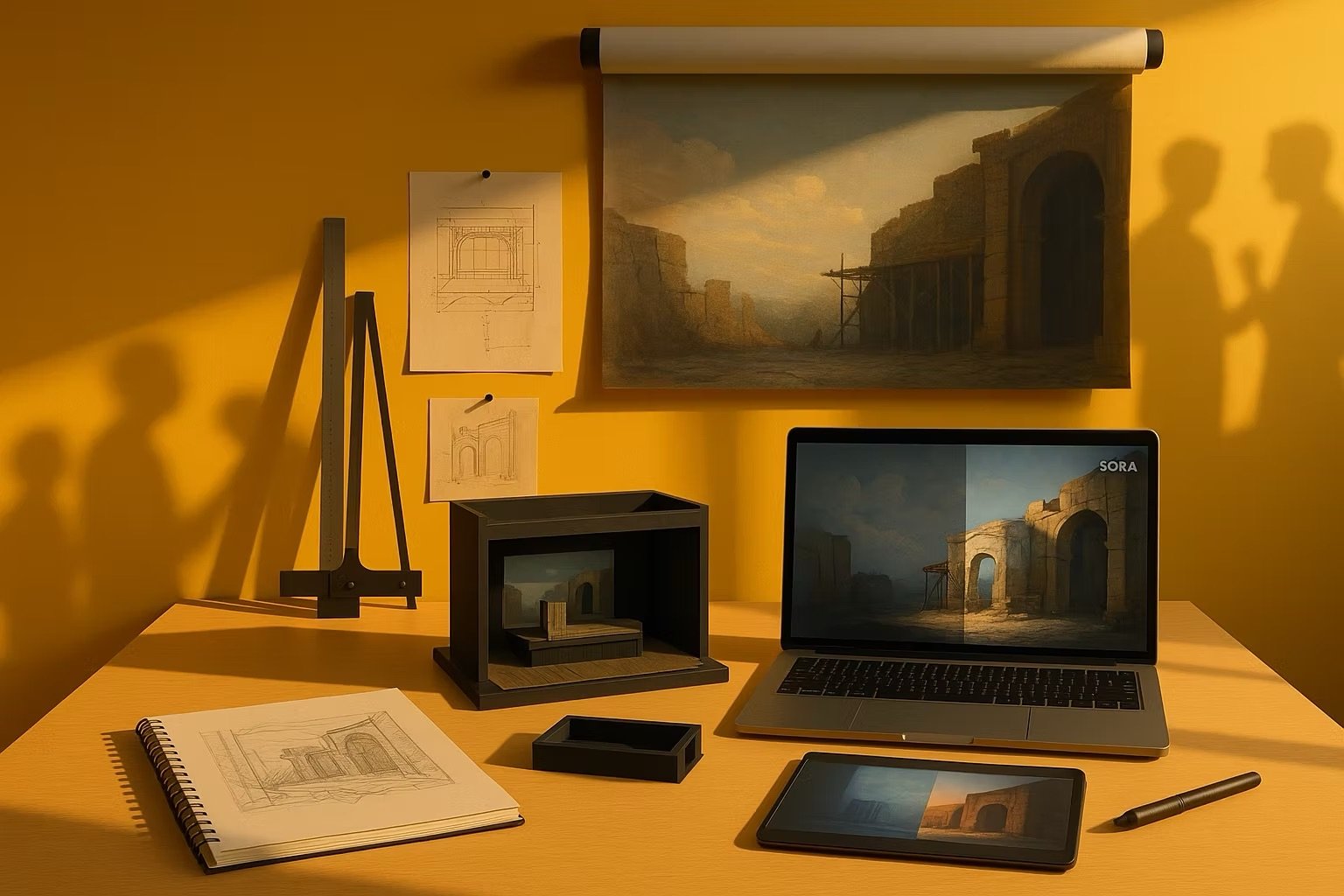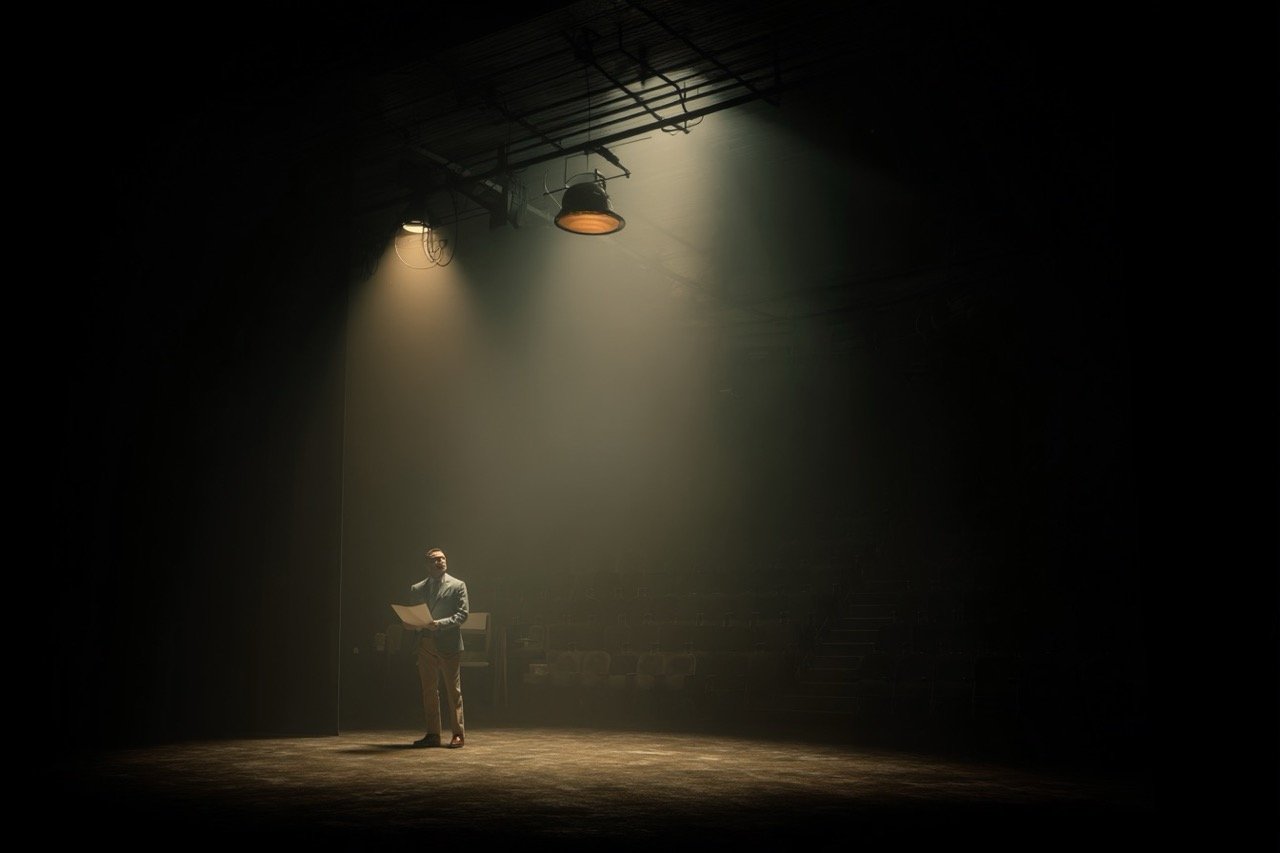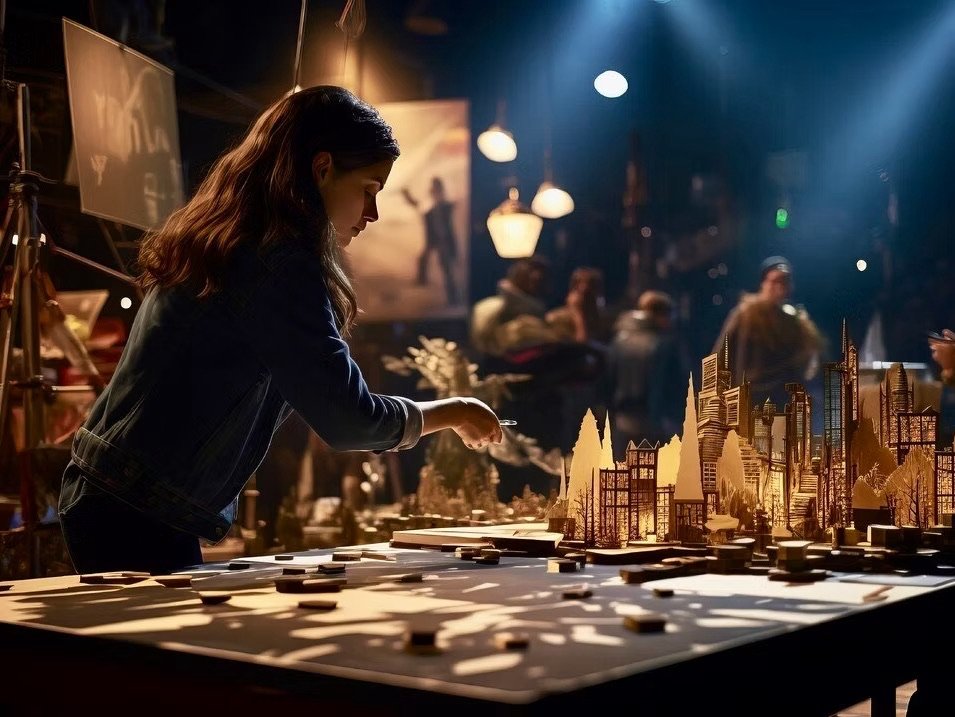Scenic Design Insights: Renderings, Models & Spatial Storytelling
Where visionary environments elevate storytelling across theatre, events, and architectural design. This blog explores how scenic design principles translate into tangible spatial experiences—through renderings, models, and technical drawings crafted with precision and purpose. Each entry highlights how design thinking can impact both theatrical productions and commercial environments with equal creative force.
What Makes a Good Scenic Design Rendering?
Scenic renderings are more than visual polish—they’re moments of story, frozen in light and space. In this post, I break down what makes a scenic rendering effective, from composition and atmosphere to the emotional weight of lighting and color.
Framing the Martyr: Scenic Design as Memory Work in Romero
From the beginning, it was clear the scenic language needed to support a nonlinear dramaturgy. The play leaps between beach and cathedral, war zone and heaven. Characters slip between time and identity. Puppetry, projections, and movement required the space to transform without literalism.
"You’re Wasting My Time" — A Scenic Design Lesson in Growth and Revision
At URTAs, I froze. A designer I admired asked how I’d change an old ground plan—and I blanked. His response stuck with me for years. But that moment taught me something far more valuable than any praise could have: the instinct to re-enter your work.
Sora in the Studio: Testing AI's Potential for Theatrical Design
As a scenic designer, I've found myself at the crossroads of tradition and innovation. AI tools have burst onto the scene, but Sora stands apart as something uniquely suited to theatrical visualization. Many of my colleagues are understandably cautious—worried that the human touch and collaborative spirit that define our craft might be diluted by automated shortcuts.
I share those concerns. Yet I can't ignore how the landscape is shifting around us. In architectural visualization and commercial production, AI is already becoming standard practice. Detailed 3D modeling that once took days in Cinema 4D or Unreal Engine is increasingly being replaced by faster, AI-driven alternatives—not because they're better, but because they're more economical and efficient.
Designing the Keller Home: A Look Back at All My Sons
When I first read All My Sons, its themes of family, morality, and the American Dream resonated deeply. It made me think of my father's side of the family, who grew up in the small town of Paris, Missouri. To me, my grandparents embodied that post-war American Dream that Miller explores in his play. My grandfather was a Korean War veteran who built a career as a traveling salesman, driving his blue van through neighboring towns, selling sunglasses, action figures, keychains, and gloves that stocked dime stores across the Midwest. My grandmother, meanwhile, owned and operated a variety store—a quintessential small-town American business built through determination and hard work.
Scenic Design Vision: Brandon PT Davis Creates Artistic Spaces Beyond the Traditional Portfolio
Brandon PT Davis reflects on his evolving identity as a scenic designer, embracing artistic freedom, technology, and creative independence in an industry shaped by metrics and tradition.
The Art of Presenting Theatre Design: A Guide for Designers
Drawing from my years of experience as a professional designer, I've developed a structured approach to craft presentations that simplify the complex narrative of our design process and magnify the impact of our message. I am thrilled to share this methodology with you in this article.
Navigating the Scenic Design Process: A Comprehensive Guide
Conceptualization is about delving into the 'What' and the 'Why' of the Design. The research phase lays the foundation by addressing the 'What': identifying the show's needs, the timeline, the setting, and the message to be conveyed. As you transition into the conceptual phase, it's time to delve deeper to unearth the 'Why': the story's significance, the rationale behind the characters' presence, and so on. This phase encapsulates the essence of the narrative and the design vision.



